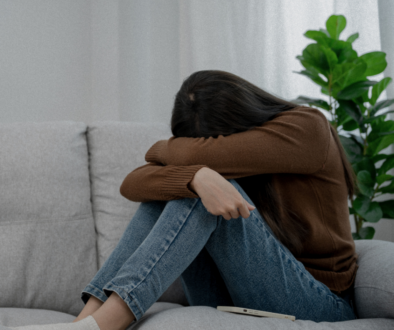Exercise is as Good for the Brain as it is for the Body
“The paradox of modern life is that survival is much easier, but stress is much higher.”
Some of us have already figured out that the gym provides the necessary physical outlet for the unavoidable mental stresses of life. If you have and you are curious as to why and how exercise works on more than just the physical body, or if you have not yet been convinced that you need to exercise. I recommend Spark: The Revolutionary New Science of Exercise and the Brain by John J. Ratey M.D. Dr. Ratey is an Associate Clinical Professor of Psychiatry at Harvard Medical School. In his book, he explains that exercise is not just for the body, it is also for the brain.
Physical activity positively affects:
Learning
ADHD
Addiction
Chronic Stress
Depression
Anxiety
Social Anxiety
Aging
Cognitive Function
Dementia
Alzheimer’s
Parkinson’s
Pregnancy (mom and baby)
Postpartum depression
Menopause
Dr. Ratey begins with the inspiration for his book: an experimental fitness based PE class at a middle school in Naperville Illinois. There, obesity disappeared and the school tested number one in the world for science. Meanwhile the U.S. as a whole has been moving in the opposite direction with increasing childhood obesity and low test scores. Other schools implementing similar fitness based PE programs saw decreases in disciplinary problems and suspensions and improvements in test scores and attendance. Dr. Ratey explains that getting the body moving wakes up the prefrontal cortex (executive function), improves learning, motivation, memory, focus, attention, and helps regulates emotions.
Exercise does all this because learning, cognitive function, and emotions are intrinsically linked to physical activity. This link is an evolutionary adaptation: Basically if we were physically active, we must have been doing something important for survival, probably obtaining food. Our brain knew it had to learn from the experience and it and remember what happened. We still have this intrinsic link today. If our body is active, we are vital, we are surviving, and that gives our brain a reason thrive. If the body withers, so does the mind. Dr. Ratey explains exercise relative to the mind-body connection.
Dopamine: This neurotransmitter is associated with learning, reward, focus, and movement. Dopamine is like automatic transmission fluid for the body and the mind. This is why Parkinson’s patients lack fluid movements and the early stages of Parkinson’s resemble ADHD. Doctors now recommend exercise to help stave off symptoms of Parkinson’s. Dopamine also plays a critical role in addiction. Despite knowing better, we continue to seek out the activity or the substance that gives us the feeling of reward from the rush of dopamine. This rush can come from anything: gambling, shopping, drugs, extreme sports, or food. Some people are genetically more predisposed to addiction as they have fewer dopamine receptors in the brain. The good news is that exercise increases dopamine.
BDNF: Brain Derived Neurotrophic factor, or what Dr. Ratey calls Miracle Grow for the brain, is also increased during exercise. BDNF helps the brain grow so we can learn and make new memories. People with depression have less BDNF and shrunken gray matter. Depression shuts down learning while exercise does just the opposite.
ANP: This hormone is released by the heart as the heart rate increases. It reduces feelings of anxiety, lowers heart rate, and lowers epinephrine (a.k.a adrenaline which in part increases the resting tension of muscles), and counters the effects of cortisol. During pregnancy, the mother’s levels of ANP triples to protect her and the developing baby. People with anxiety have lower levels of ANP. The homeopathic effect of exercise is that getting the heart rate up actually has a relaxing effect on the body and the mind.
IGF1: This hormone is released by working muscles. It works with insulin to send glucose to cells and helps BDNF in the brain to form long term memories.
VEGF: Also released by working muscles. It forms new capillaries in the body and the brain.
FGF2:Released by muscles and helps brain tissue grow.
Other Benefits of Exercise:
Exercise is like a vaccine that makes us more resilient to the stresses of life.
The more physically active we are, the more social and confident we are.
Exercisers are less anxious, less neurotic, less depressed, and more socially outgoing.
Blood shifts back to Prefrontal Cortex after exercise. Cardio/aerobic exercise is the best for improving executive function (impulse control, social functioning, planning, differentiating between good and bad or same and different, understand future consequences of current actions, working toward a goal, and predictions of outcomes). This is why kids need recess, employees need to time to exercise during lunch, and anyone wanting to lose weight or get healthy and fit needs to do cardio.
Exercise increases GABA, which calms the nervous system, improves mood, relieves anxiety, increases feelings of well-being and relaxation, and promotes muscle growth. Yoga has been shown to increase GABA 27%.
Exercise increases serotonin, which controls mood, anger, impulsivity, and aggressiveness. Serotonin make us feel calm and safe. Tryptophan is a precursor to serotonin. Yes, tryptophan, the stuff in food. It’s not our fault we turn to food when we are stressed, anxious, or depressed. Serotonin also increases when with another person, so workout with a buddy.
30 minutes on the treadmill reduces anxiety 2:1 versus sitting and relaxing. Only rigorous exercise alleviates the sensitivity to the physical arousal of anxiety: As heart rate and breathing increase during rigorous exercise, we become desensitized to that feeling and less likely to suffer panic attacks.
Rigorous exercise leads to better motor reflex control, which is important for kids or adults who can’t seem to sit still.
Lifting weights at 85% of maximum (IE heavy) is best for lowering anxiety.
More complex exercise, like martial arts, is better at increasing dopamine and norepinephrine (which ADHD drugs target).
Antidepressants work bottom-up on the brain stem (relieving physical symptoms first).
Cognitive Behavioral Therapy works top-down on the Prefrontal Cortex, helping us feel better about ourselves first before physical symptoms relieve. Exercise in conjunction with antidepressants and CBT is helpful because it does both.
Women are twice as likely to suffer from anxiety and depression than men. The risk of depression goes up during menopause and more women than men suffer from Alzheimer’s.
Exercise improves mood and concentration, balances hormones, alleviate mental and physical symptoms of menopause and pregnancy.
Brisk walking five hours each week reduces the risk of gestational diabetes by 75%.
Exercise sends more oxygen and nutrients to the developing baby. Jostling the baby during exercise, like touching and holding a baby, stimulates brain development.
Babies born to active mothers are better able to self-soothe and have higher IQ’s.
Active individuals over 65 are 50% less like to suffer from dementia.
Exercising as little as twice a week can reduce the risk of dementia by 50%. Obesity, depression, diabetes, high cholesterol, heart disease, and high blood pressure all increase the risk of dementia (Alzheimer’s, Stroke, Parkinson’s). These are all preventable through diet, lifestyle, and exercise.
Exercise slows down amyloid plaque build-up and prevents inflammation (which both cause Alzheimer’s).
THC, chocolate, and exercise all target the same receptors in brain.
We know the physical risks of being inactive: increased risk of obesity, cancer, diabetes, and heart disease. Dr. Ratey explains how inactivity also causes the brain to wither. Without sufficient exercise, we are increasing our chances of suffering from depression, cognitive decline, and dementia. Even though we no longer need to work so hard to survive, we have retained this evolutionary connection between physical activity and a thriving mind. Exercise has become the modern day replacement for the prehistoric fight for survival. Being physically fit is necessary not only for longevity, but also for enhancing the mental and emotional quality of the life we live.
I hope you realize more than ever the benefits of taking care of yourself and your health. Never feel guilty about taking time out of your busy day to exercise. Imagine all the people in your life who will also benefit, now and in the future, from your commitment to your physical, mental, and emotional well-being. Read Spark, take care of yourself, be an inspiration to others, and email me if you need help getting started or sticking to a routine.



